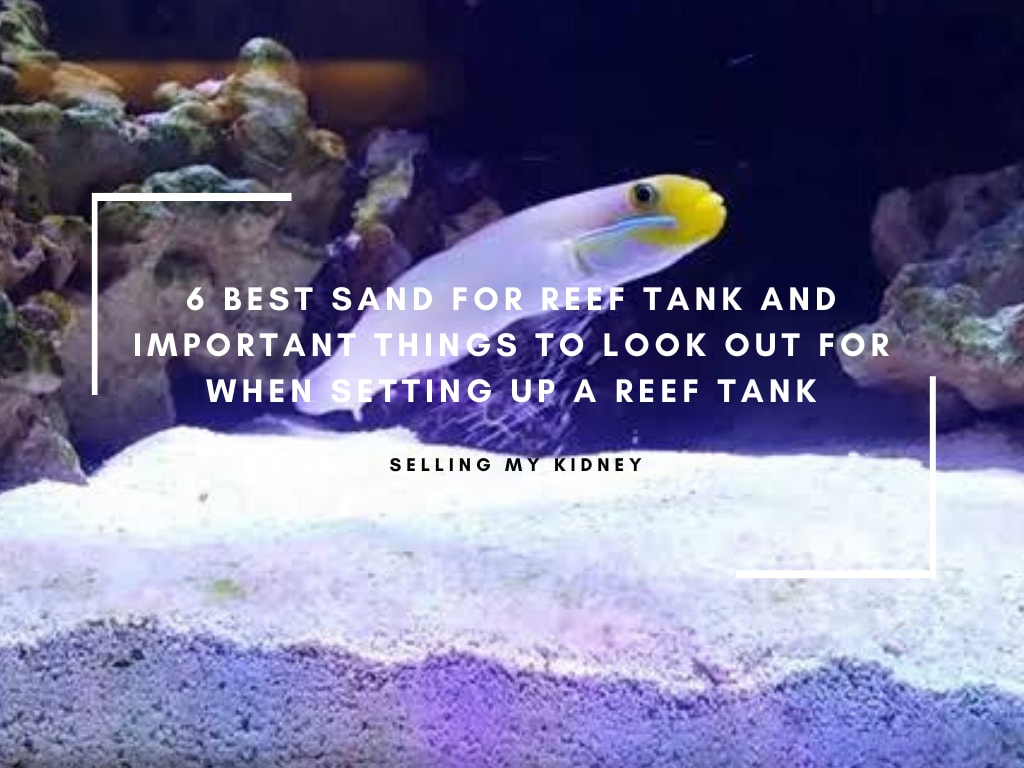Many hobbyists agree that corals reef tanks are among one of the more beautiful projects. Designing a coral tank is no small feat though.
Just as they are incredibly vibrant, they are also notoriously difficult to maintain. Raising coral is different from working with other marine animals.
With a little bit of research, raising coral is not as hard as it seems. Do you have what it takes to raise some of these beginner’s coral species?
Coral Types
While all coral has similar living requirements, some species are easier to raise than others.
Regardless of the level of expertise which is recommended for a tank, you should ensure the needs of each particular species are met as they are all sensitive.
Consider the following “easy” coral you can add to your beginner tank:
Mushrooms
![The Best Corals for Reef Tanks [Complete Guide] 3 Mushrooms](https://animalfella.com/wp-content/uploads/2020/07/Mushrooms-1024x683.webp)
Mushrooms are not just for gardens, but you should remember that these are not a fungus. Coral mushrooms is one of the easiest types of coral to keep in your tank. Their requirements are relatively easy to mimic in an aquarium environment. To top it all off, this coral is relatively inexpensive when compared to other, similar corals.
- Average size: 0.5-3 inches
- Expertise : Beginner
- Lighting : Low to moderate
- Flow: Low to moderate
- Location: Middle or bottom of the tank
- Food: They will photosynthesize food with the help of the tank lights and can capture food particles in the water. They are not picky eaters.
Pulsing Xenia
![The Best Corals for Reef Tanks [Complete Guide] 4 Pulsing Xenia](https://animalfella.com/wp-content/uploads/2020/07/Pulsing-Xenia-831x1024.webp)
If you are looking for an active coral, Pulsing Xenia is the one for you. You can actually see this organism move a bit and “pulse” in your tank. They are relatively hardy for a coral species. However, you must monitor their population, so they don’t overrun your tank.
- Average size: 1-4 inches
- Expertise : Beginner
- Lighting : Low to moderate
- Flow: Low to moderate
- Location: Middle or bottom of the tank
- Food: They will photosynthesize from the light, but it’s a good idea to supplement this with phytoplankton and zooplankton.
Torch Coral
![The Best Corals for Reef Tanks [Complete Guide] 5 Torch Coral](https://animalfella.com/wp-content/uploads/2020/07/Torch-Coral-1024x768.webp)
This specimen is vibrant and very funky. If you are looking for something which will add a little bit of color to your aquarium, torch coral it is the best choice. With long, flowing tentacles and neon colors, torch coral will add a splash of life to your tank. They come in many different colors.
- Average size: 2-6 inches
- Expertise : Beginner to intermediate
- Lighting : Moderate to high
- Flow: Moderate to high
- Location: Middle
- Food: They will generally photosynthesize, but will benefit from coral food supplements.
Feather Duster
![The Best Corals for Reef Tanks [Complete Guide] 6 Feather Duster](https://animalfella.com/wp-content/uploads/2020/07/Feather-Duster-1024x683.webp)
You may recognize this coral as it is often seen in many children’s movies which involve ocean fun. These corals are known for looking like feather dusters and retracting their feathers when they get scared. The feathers are appendages which can grab food particles floating around the tank.
- Average size: 1-7 inches
- Expertise : Beginner to intermediate
- Lighting : Low
- Flow: Moderate
- Location: Bottom
- Food: This coral requires feeding. This species is not very picky and can thrive with a combination of plankton and commercial coral food.
Brain Coral
![The Best Corals for Reef Tanks [Complete Guide] 7 Brain Coral](https://animalfella.com/wp-content/uploads/2020/07/Brain-Coral-1024x768.webp)
As its name suggests, this coral looks a little bit like a human brain. Its small folds of neon colors are hard to match in color. This low maintenance coral is a notoriously slow grower, but it will thrive in the right conditions. Try to keep this stationary coral away from anything which could sting it.
- Average size: 1-7 inches
- Expertise : Beginner
- Lighting : Moderate
- Flow: Moderate
- Location: Bottom
- Food: This coral will photosynthesize and get the food it needs from the light, but you can supplement it with zooplankton.
Birdnest
![The Best Corals for Reef Tanks [Complete Guide] 8 Birdnest Coral](https://animalfella.com/wp-content/uploads/2020/07/Birdnest-Coral-1024x683.webp)
This adorable coral looks almost like a cartoon depiction of how someone might imagine a coral to look. Its sweet pastel colors, and excessive branching are sure to draw attention to these invertebrates in your aquarium. It’s a fast grower and is relatively low maintenance. Some hobbyists consider adding these to their tanks in order to test the waters for more expensive, delicate additions.
- Average size: 0.5-8 inches
- Expertise : Beginner
- Lighting : Moderate to high
- Flow: Moderate to high
- Location: Middle to top
- Food: This coral will photosynthesize most of their food, but you should consider supplementing this with any kind of coral food.
Toadstool Leather Corals
![The Best Corals for Reef Tanks [Complete Guide] 9 Toadstool Leather Corals](https://animalfella.com/wp-content/uploads/2020/07/Toadstool-Leather-Corals-1024x683.webp)
This adorable and soft-looking coral comes in a whole range of pastel colors. It is one of the easier flowery corals to raise. This coral appears to sway and move and makes a great addition to your tank. Its strange way of growing makes it almost unpredictable in design. As it matures and grows, it will take on intricate patterns and shapes.
- Average size: 1-10 inches
- Expertise : Beginner
- Lighting : Moderate to high
- Flow: Moderate
- Location: Middle
- Food: This coral will photosynthesize most of its food, but will appreciate phytoplankton feedings every now and again.
Kenya Tree
![The Best Corals for Reef Tanks [Complete Guide] 10 Kenya Tree](https://animalfella.com/wp-content/uploads/2020/07/Kenya-Tree-1024x683.webp)
When you look at a Kenya Tree coral, it is easy to understand why many people confuse them with plants. These versatile corals come in a variety of colors and are very popular as they quickly grow and reproduce new corals. They tend to be a little expensive, but many hobbyists find them to be a sound investment.
- Average size: 2-7 inches
- Expertise : Beginner
- Lighting : Moderate to high
- Flow: Moderate to high
- Location: Any level
- Food: They require coral food with supplemental plankton feedings.
Green Star Polyps (GSP)
![The Best Corals for Reef Tanks [Complete Guide] 11 Green Star Polyps](https://animalfella.com/wp-content/uploads/2020/07/Green-Star-Polyps-1024x685.webp)
This incredibly vibrant coral resembles a field of grass. Its strange flow and movement patterns make it a captivating addition in any aquarium. These hardy corals will grow anywhere and everywhere. It is incredibly important to keep this coral trimmed because otherwise it will quickly take over the whole tank. Make sure you put them in an easy-to-access location where you can reach down and cut excess polyps off using a razor blade.
- Average size: 0.5-1 inch
- Expertise : Beginner to intermediate
- Lighting : Moderate to high
- Flow: Moderate to high
- Location: Any level
- Food: This coral can thrive from photosynthesis alone.
Hammer Corals
![The Best Corals for Reef Tanks [Complete Guide] 12 Hammer Corals](https://animalfella.com/wp-content/uploads/2020/07/Hammer-Corals-1024x693.webp)
This vibrant coral sports neon colors and remains an incredibly popular organism to have in your tank. They come in many different colors and will sway in intricate, mesmerizing ways when their short tentacles become intertwined. It’s important to note that these corals should only be placed in an older tank, and extra care must be taken so that they are not in contact with other corals as their stingers can harm or kill other corals.
- Average size: 1-3 inches
- Expertise : Beginner to intermediate
- Lighting : Moderate to high
- Flow: Moderate to high
- Location: Middle
- Food: They thrive from photosynthesis, but will benefit from coral food.
Bubble Coral
![The Best Corals for Reef Tanks [Complete Guide] 13 Bubble Coral](https://animalfella.com/wp-content/uploads/2020/07/Bubble-Coral-1024x683.webp)
If you are looking for a unique and interesting animal to add to your tank, it doesn’t get much stranger than the bubble coral. They have a very distinct look that is reminiscent of little bubbles sitting on a rock at the bottom of the tank.
- Average size: 2-8 inches
- Expertise : Beginner
- Lighting : Low to moderate
- Flow: Low to moderate
- Location: Bottom to middle
- Food: They will get most of what they need from photosynthesis, but will also catch and eat anything they find in the water.
Candy Cane Coral
These little fleshly corals can add a splash of color to your tank. While they start out pretty small, they can multiply fast. It’s important to remember that these corals must also be kept away from other corals as they will attack them with their stingers. By coral standards, these are aggressive eaters.
- Average size: 1-3 inches
- Expertise : Beginner to intermediate
- Lighting : Low to moderate
- Flow: Moderate
- Location: Bottom to middle
- Food: It will obtain most food from photosynthesis, but will also enjoy occasional plankton.
Montipora
![The Best Corals for Reef Tanks [Complete Guide] 14 Montipora](https://animalfella.com/wp-content/uploads/2020/07/Montipora.webp)
Montipora corals are sometimes referred to as dinner plates. They grow very fast and steady and have an interesting shape which is comparable to wild fungi that grow on trees in the woods.
- Average size: 0.5-12 inches
- Expertise : Beginner
- Lighting : Moderate to high
- Flow: Moderate to high
- Location: Middle to top
- Food: They can thrive on photosynthesis alone, but supplemental feedings can help them grow faster.
Palythoas
![The Best Corals for Reef Tanks [Complete Guide] 15 Palythoas](https://animalfella.com/wp-content/uploads/2020/07/Palythoas-1024x576.webp)
These are easily one of the best corals for a beginner and can flourish in their tank. They tend not to have as exciting colors as some other corals, but they make up for this by simply being easy to raise. With the rate at which they spread and multiply, you can simply weed out those you no longer want. With proper cultivation, you can encourage fun and vibrant colors such as pink or bright yellow.
- Average size: 0.25-2 inches
- Expertise : Beginner
- Lighting : Low to high
- Flow: Moderate to high
- Location: Any level
- Food: They can thrive from the light alone.
Zoanthids (Zoas)
These little neon colored corals look amazing and grow pretty fast. They have very little living requirements and are easy to keep. Just make sure you don’t let them take over your tank.
- Average size: 0.25-0.75 inches
- Expertise : Beginner
- Lighting : Low to high
- Flow: Moderate to high
- Location: Any level
- Food: They can thrive from lighting alone, but will benefit from supplemental feedings.
Coral makes an excellent addition to your tank (learn more). With a little research and care, taking care of coral doesn’t have to be much of a hassle.

![The Best Corals for Reef Tanks [Complete Guide] 16 William Rieder](https://animalfella.com/wp-content/uploads/2022/10/william-rieder-profile-photo.jpg)


![The Best LED Lighting for Reef Tanks [With Buying Guide] 33 LED Lighting for Reef Tanks](https://animalfella.com/wp-content/uploads/2020/04/LED-Lighting-for-Reef-Tanks.webp)

